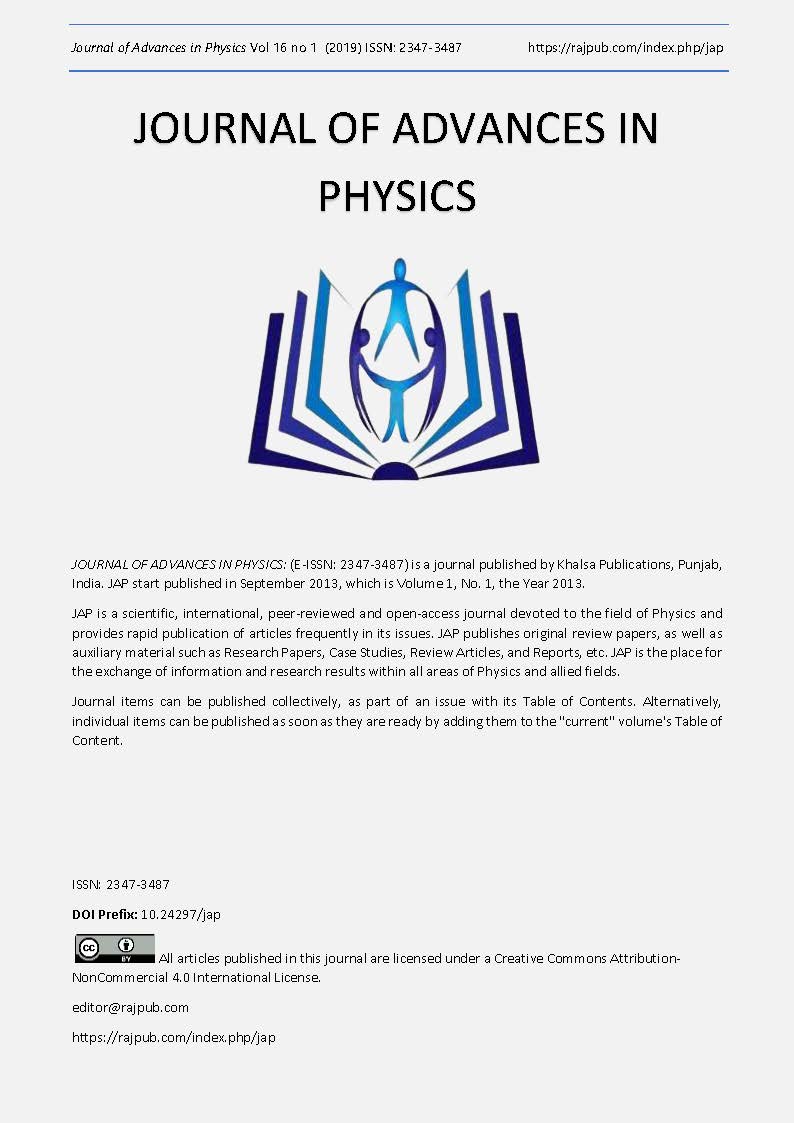Anti-aging Effect of Free Curcumin and Niosome Entrapping Curcumin in H2O2-induced Aging in Human Fibroblast Cell Lines
DOI:
https://doi.org/10.24297/jap.v16i1.8230Keywords:
Aging, Curcumin, H2O2, Oxidative stress, HFB4 cell linesAbstract
Aging is not a disease but it a changes that come with time, aging may make an individual susceptible to disease. Exposure to smoke, UV radiation, chemicals or other exogenous agents over time can damage cells, as can produce DNA replication errors or oxidative stress. The use of antioxidant curcumin can produce intracellular defenses in addition to low expensive and no side effect. In the present study, hydrogen peroxide (H2O2) was used to produce oxidative stress in Human Fibroblast cell lines (HFB4) and free curcumin and niosome entrapping curcumin treatments are used for aged HFB4 cell lines. Using Flowcytometry analysis, p 16 INK4a and p53 BP1 genes levels were investigated as aging biomarkers. Result show that H2O2 treated cell lines are highly elevate p16 INK4a and p53 BP1 genes. While HFB4 cells treated with free curcumin and niosome entrapping curcumin were significantly protected against aged process.
Downloads
References
de Magalhães , J.P. Nat. Rev. Cancer. 2013;13:357–365.
Gunasekaran, U., and M. Gannon. Aging (Albany NY). 2011;3:565–575.
North, B.J., and D.A. Sinclair. Circ. Res. 2012;110:1097–1108.
Niccoli, T., and L. Partridge. Curr. Biol. 2012;22:R741–R752.
López-Otín, C., M.A. Blasco, L. Partridge, M. Serrano, and G. Kroemer. Cell. 2013;153:1194–1217.
d’Adda di Fagagna, F. Nat. Rev. Cancer. 2008;8:512–522.
Fumagalli, M., F. Rossiello, M. Clerici, S. Barozzi, D. Cittaro, J.M. Kaplunov, G. Bucci, M. Dobreva, V. Matti, C.M. Beausejour, et al. Nat. Cell Biol. 2012;14:355–365.
Rodier, F., D.P. Mu?oz, R. Teachenor, V. Chu, O. Le, D. Bhaumik, J.P. Coppé, E. Campeau, C.M. Beauséjour, S.H. Kim, et al. J. Cell Sci. 2011;124:68–81.
Salama, R., M. Sadaie, M. Hoare, and M. Narita. Genes Dev. 2014;28:99–114.
Kruiswijk, F., C.F. Labuschagne, and K.H. Vousden. Nat. Rev. Mol. Cell Biol. 2015;16:393–405.
Xu, M., A.K. Palmer, H. Ding, M.M. Weivoda, T. Pirtskhalava, T.A. White, A. Sepe, K.O. Johnson, M.B. Stout, N. Giorgadze, et al. eLife. 2015;4:p12997.
Berry, D.C., Y. Jiang, R.W. Arpke, E.L. Close, A. Uchida, D. Reading, E.D. Berglund, M. Kyba, and J.M. Graff. Cell Metab. 2017;25:166–181
Suter-Widmer J. Elsner P. Boca Raton, FL: CRC Press; 1996. pp. 257–265.
Duncan KO. Leffell DJ. Dermatol Clin. 1997;15:583.
Glogau RG. Dermatology. Edinburgh: Mosby; 2003; 2357–2360.
Waller JM. Maibach HI. Skin Res Technol. 2005;11:221.
Südel KM. Venzke K. Mielke H. Breitenbach U. Mundt C. Jaspers S. Koop U. Sauermann K. Knussman-Hartig E. Moll I. Gercken G. Young AR. Stäb F. Wenck H. Gallinat S. Photochem Photobiol. 2005;81:581.
Bunker VW. Med Lab Sci.1992;49:299–312.
White E, Shannon JS, Patterson RE. Cancer Epidemiol Biomarkers Prev. 1997;6:769–774.
Hatwalne MS. Indian J Anaesth. 2012;56(3):227-233.
Jagetia GC, Aggarwal BB. J Clin Immunol. 2007;27(1):19-35.
Egan ME, Pearson M, Weiner SA, Rajendran V, et al. Science. 2004;23;304(5670):600-602.
Anand P, Thomas SG, Kunnumakkara AB, Sundaram C, et al. Biochem Pharmacol. 2008;1;76(11):1590-611.
Li Y, Toscano M, Mazzone G, Russo N. New J Chem. 2018;42(15):12698-12705.
Mukherjee PK, Maity N, Nema NK, Sarkar BK. Phytomedicine. 2011;19(1):64-73.
Wan S, Sun Y, Qi X and Tan F. AAPS PharmSciTech 2012;13(1): 159-166.
Sun M, Su X, Ding B, He X, Liu X, Yu A, Lou H, Zhai G. Nanomedicine (Lond). 2012;7(7):1085-100. doi: 10.2217/nnm.12.80.
Vinardell MP, Mitjans M. Cosmetics. 2015;2(4):342-354.
Yoshida, H., Lehr, C.M., Kok, W., Junginger, H.E., Verhoef, J.C., Bouwistra, J.A. Control. Release 1992;21, 145–153.
Jiao, J. Adv. Drug Deliv. Rev. 2008;60, 1663–1673.
Xiang J, Wan C, Guo R, Guo D. Biomed Res Int. 2016;2016:1-6.
Alisagar S, Misra A. J Pharm Pharmaceut Sci. 2002;5:220–5.
Bendas R, Tadros I. AAPS Pharm Sci Tech.,v. 2007;8:213-220.
Carugo D., Bott E., Owen J., Stride E., Nastruzzi C.. Scientific Reports 2016; 1-15.
Reddy, A.C. and Lokesh, B.R. Molecular and Cellular Biochemistry 1994; 137: 1-8.
Ortiz-Ortiz, M.A., Morán, J.M., Bravosanpedro, J.M., González-Polo, R.A., Niso-Santano, M., Anantharam, V., Kanthasamy, A.G., Soler, G. and Fuentes, J.M. NeuroToxicolgy 2009; 30: 1008-1018.
Butterfield, D.A., Drake, J., Pocernich, C. and Castegna, A. Trends in Molecular Medicine 2001; 7:548-554.
Lauderback, C.M., Hackett, J.M., Huang, F.F., Keller, J.N., Szweda, L.I., Markesbery, W.R. and Butterfield, D.A. Journal of Neurochemistry 2001;78: 413-416.
Kyle M Lapak, Christin E Burd. Molecular Cancer Research 2013;12(2).
Downloads
Published
How to Cite
Issue
Section
License
 All articles published in Journal of Advances in Linguistics are licensed under a Creative Commons Attribution 4.0 International License.
All articles published in Journal of Advances in Linguistics are licensed under a Creative Commons Attribution 4.0 International License.




